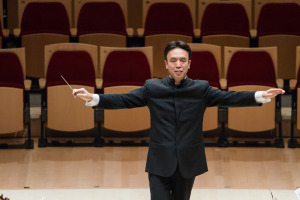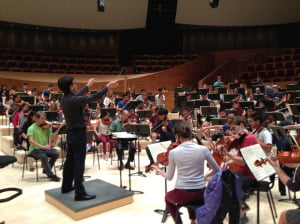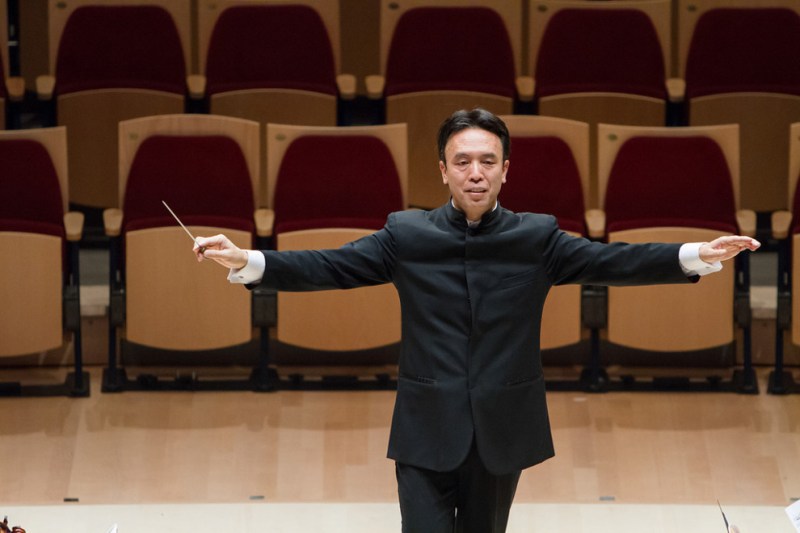
“It should be like dreaming in beautiful springtime — by moonlight.” Frédéric Chopin wrote these words to a good friend to describe his “Piano Concerto No. 1 in E minor, Op. 11,” which he secretly dedicated to classmate Konstancja Gladkhowska. He composed the piece in 1830 at the age of 20 for his muse, whom he met while attending the Warsaw School of Music. It is fitting, then, that at the comparable age of 19, Stanford sophomore Hugo Kitano would serve as the soloist for Chopin’s piece during Stanford Philharmonia Orchestra‘s most recent performance in Bing Concert Hall on Nov. 8.
The concert, comprised of two hour-long pieces, began with Chopin’s concerto. The orchestra introduced the show with a boldly august theme of swift, strict motions, as if to energetically announce the concert’s beginning and, as Chopin might have implied, the arrival of springtime. This grand inception was followed by a more mellow, tender theme that blossomed into the pianist’s entrance.
Kitano, who performed at Carnegie Hall at the age of 13, earned his position at the evening concert as a prize for winning last year’s annual Stanford Symphony Orchestra Concerto Competition. During the concert, he often took on a true solo, as orchestra players and audience members sat and listened to the resonating room’s central player as he skillfully commanded the piano keys. The orchestra returned with, at times, a murmur behind the piano’s instruction; other times, the orchestra took the melody and the pianist dropped out.
The on-and-off exchange of the piano and orchestra created a dialogue between the instruments. This interplay of striking interjections and delicate statements seemed to echo throughout.

“The rise-and-fall of the movements carry me from one thought to the next,” said attendee Tamara Mekler ’17. “The music plays a meditative role in that way.”
After a brief intermission, the orchestra, without their piano-playing soloist, began Felix Mendelssohn’s “Symphony No. 3 in A minor.” Known as the “Scottish Symphony,” Mendelssohn’s piece takes its nickname from the composer’s travels to Scotland in 1829 when he was 20 years old.
Indeed, the audience could have “no trouble imagining a crepuscular scene in the ruins of an Edinburgh castle, or disconsolate ghosts of Scottish history wandering the foggy moors,” as William Joo, Ph.D. candidate in the Stanford Neuroscience Program and member of the Symphony Orchestra, wrote in the concert’s program.
Concertmistress Francesca Dawis described Mendelssohn’s piece as “adventurous.” She said, “It’s lighthearted and whimsical at times, but it finishes with a grand finale. It feels like you’re going on a journey.”
Although Joo wrote that Mendelssohn’s piece should not be dismissed as merely a “folkloric travelogue,” the captivating piece undeniably has the ability to transport listeners from their setting.
Together, Chopin’s song of “springtime” and Mendelssohn’s “Scottish Symphony” carried audience members in multiple directions beyond our hub of Palo Alto.
Contact Jenna Shapiro at jennshap ‘at’ stanford.edu.
